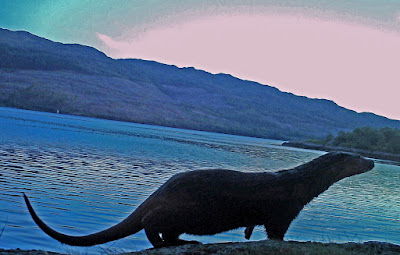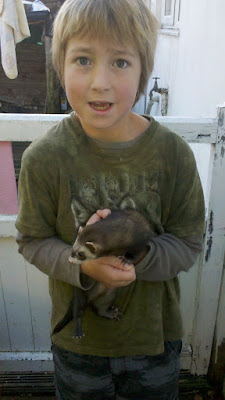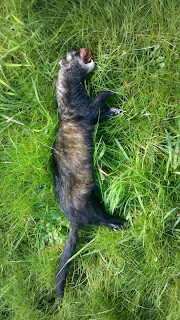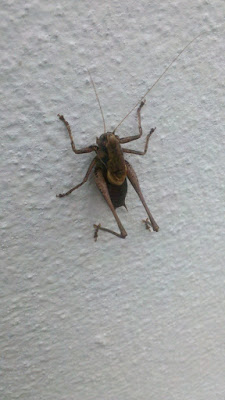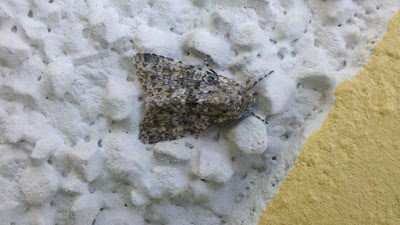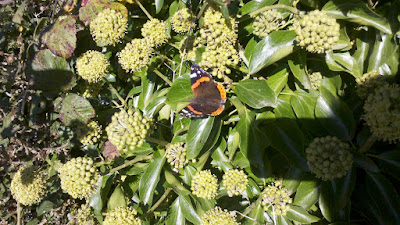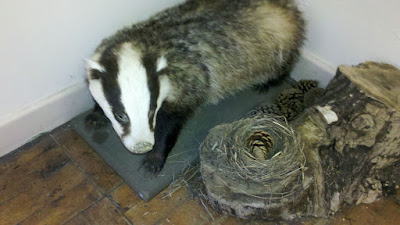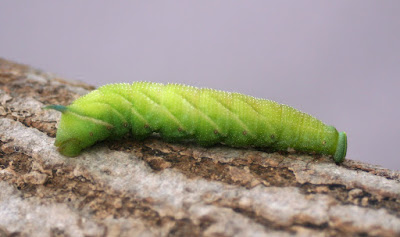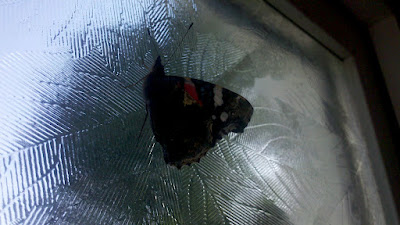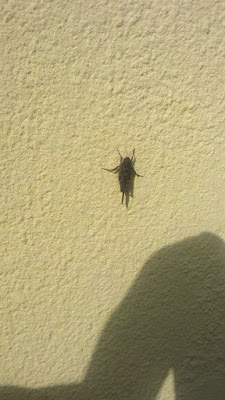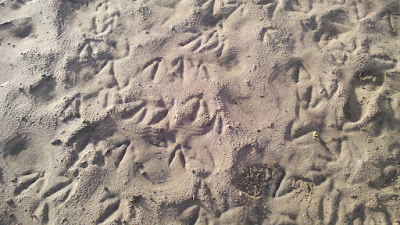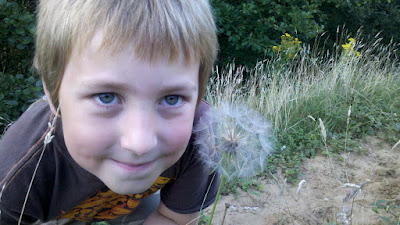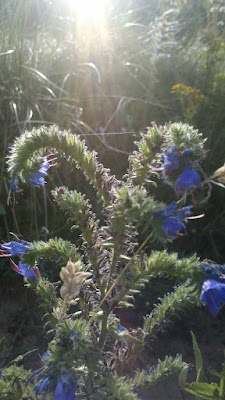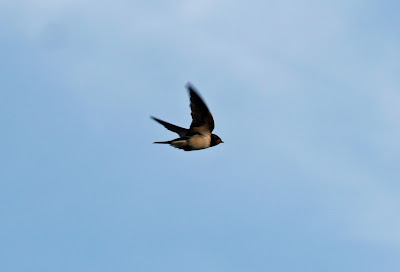Hi, I'm Rudi, i'm 8 years old and my favourite book is 'Tarka the Otter' by Henry Williamson. Its about the life of an otter named Tarka and British Wildlife. One night i was reading the book with my dad and i said that i wanted to see all the animals in the book, he said i should do it and call it the Tarka Challenge. My Tarka Challenge started on 1st January 2012. The book contains 89 birds, 54 land based animals, 120 plants and 56 aquatic organisms.
The rules are simple, i must either see each thing myself or photograph it using my trail camera. I will try and see each thing on my local patch (Ogmore River Catchment) but may need to look somewhere else in Britain.
The rules are simple, i must either see each thing myself or photograph it using my trail camera. I will try and see each thing on my local patch (Ogmore River Catchment) but may need to look somewhere else in Britain.
Bullfinch
We have not had many birds in our garden recently because a cat has been scaring them away. I was looking out this morning and saw this fat Bullfinch, the first time ive ever seen one in our garden.
Bullfinch (Pyrrhula pyrrhula)
This is one of the prettiest garden birds, i really like them. They mainly eat plant shoots and buds.
Oystercatchers
Well, we went looking for a Snow Bunting but didnt find one, we did see lots of Oystercatchers though which i really like, and a nice sunset.
Oystercatcher (Haematopus ostralegus)
Even though they are called oystercatchers, they do not eat oysters. They mainly eat cockles and mussels. An oystercatcher can eat up to 500 cockles a day!
Top 10 Spots
Well i have had a really busy year and i have seen loads of wildlife. I was supposed to try to see everything in one year but there's still a lot of wildlife left to see. I had a really nice email from the Henry Williamson Society (http://www.henrywilliamson.co.uk/), Henry Williamson wrote the book and they said he would have been impressed with my challenge. I have decided to keep on going and carry on looking for wildlife from the book.
The short film above is about my own favourite top ten spots from my adventures this year. I made it to show at my local Wildlife Trusts members evening. If your not a member of the Wildlife Trust, please join and help British Wildlife - www.welshwildlife.org/
I'm off now on a hunt for my first ever Snow Bunting!
Merry Christmas Everyone.
Another Hawkmoth Caterpillar!
Some friends just found this caterpillar and asked me to identify it...
Im pretty sure its an
Elephant Hawkmoth (Deilphila elpenor)
It gets its name from the trunk like snout of the caterpillar. The maoth is orange and pink and lives in woodlands and gardens.
Im pretty sure its an
Elephant Hawkmoth (Deilphila elpenor)
It gets its name from the trunk like snout of the caterpillar. The maoth is orange and pink and lives in woodlands and gardens.
Birthday Treats
Me and dad managed to lighten my otter picture taken earlier in the year in Scotland. Now you can see the otters fur better.
My birthday was in October and i had a really good time. I had a bagpipe chanter and lots of cool presents. A ferret named Moraig came to stay with us for a week.
As part of my birthday treat we went to west wales and stayed in a yurt which is a type of tent. It had a fire inside that we cooked sausages on. It was really cosy. This is the place we stayed at http://www.larkhilltipis.co.uk/ it had its own woods which you could walk around in and some cool wood carvings.
On the way back to the tent we stopped at Cenarth Falls to try to see salmon jumping up the waterfalls but we were unlucky. A fisherman nearly caught a big salmon but luckily it got away. We were watching his fishing rod bend right over.
We found a dead polecat by our house, it had been run over by a car.
We found this Bush Cricket sitting on the wall of my grampys house, it was quite big.
We have also had lots of big spiders in the house like this one.
We went for a walk to the beach on the weekend and as we were leaving our house we spotted these on the wall.
Up on the common we found a dead shrew
We found this worm crossing a road so i picked it up and moved it onto the grass so it wouldn't get squashed or eaten by a bird.
We spotted these sheep through a hole in a wall.
We had a break on the beach and had a cup of tomato soup and an apple for lunch.
We saw this red admiral sunbathing on an ivy plant.
And this dragon fly chasing insects around.
We stopped off at the Heritage Coast Centre to say hello to the stuffed badger, we call him Bloody Bill Brock after the badger in Tarka the Otter.
So, off the list are
Ferret
The Ferret is from the same family as Otters, Badgers, Stoats, Weasels, Polecats and Pine Martens. It is a domesticated animal which means it has grown to rely on Humans. It is kept by people as a pet or used for hunting rabbits where they send the ferret down the rabbit holes to scare them out.
Blackthorn (Prunus spinosa)
This is described as a shrub which is a bit like a small tree. It has really sharp spines on the stems. The fruits are called Sloes and have a really weird dry taste. My dad makes Sloe gin out of the fruits every Christmas, which he says is really nice.
Polecat (Mustela putorius)
You would be really lucky to see a live polecat. Most people never see them and if they do its like me, dead beside the road. Its mainly nocturnal and marks its territory with scent. It feeds on rabbits, rodents and birds and is a really good hunter and killer.
Earthworm (Lumbricidae)
Earthworms have segmented bodies with 8 short stiff bristles on each segment. The one in my picture is an adult earthworm, you can tell this because it has a swollen band around the middle of the body called a clitellum. In a garden lawn you can have up to 40 worms in a square metre. They are an important food source for a lot of our wildlife.
Spider (Tegenaria gigantean)
These are known as House spiders and they like to come into homes in the winter. The ones in our house are really big. You can read more about them http://www.guardian.co.uk/environment/2012/sep/02/specieswatch-house-spiders-climate
My birthday was in October and i had a really good time. I had a bagpipe chanter and lots of cool presents. A ferret named Moraig came to stay with us for a week.
As part of my birthday treat we went to west wales and stayed in a yurt which is a type of tent. It had a fire inside that we cooked sausages on. It was really cosy. This is the place we stayed at http://www.larkhilltipis.co.uk/ it had its own woods which you could walk around in and some cool wood carvings.
Our Tent
The view from the window
Cold outside, cosy inside
Carved Owl on top of totem pole
Tea cooking on the stove
We went to the Welsh Wildlife Centre (http://www.welshwildlife.org/) It was a really cool place but the weather was not very good so we didn't see much.
Sloes, the fruits of the Blackthorn tree
On the way back to the tent we stopped at Cenarth Falls to try to see salmon jumping up the waterfalls but we were unlucky. A fisherman nearly caught a big salmon but luckily it got away. We were watching his fishing rod bend right over.
We found a dead polecat by our house, it had been run over by a car.
We found this Bush Cricket sitting on the wall of my grampys house, it was quite big.
We have also had lots of big spiders in the house like this one.
We went for a walk to the beach on the weekend and as we were leaving our house we spotted these on the wall.
A Moth
A Harvestman
Up on the common we found a dead shrew
We found this worm crossing a road so i picked it up and moved it onto the grass so it wouldn't get squashed or eaten by a bird.
We spotted these sheep through a hole in a wall.
We had a break on the beach and had a cup of tomato soup and an apple for lunch.
We saw this red admiral sunbathing on an ivy plant.
And this dragon fly chasing insects around.
We stopped off at the Heritage Coast Centre to say hello to the stuffed badger, we call him Bloody Bill Brock after the badger in Tarka the Otter.
So, off the list are
Ferret
The Ferret is from the same family as Otters, Badgers, Stoats, Weasels, Polecats and Pine Martens. It is a domesticated animal which means it has grown to rely on Humans. It is kept by people as a pet or used for hunting rabbits where they send the ferret down the rabbit holes to scare them out.
Blackthorn (Prunus spinosa)
This is described as a shrub which is a bit like a small tree. It has really sharp spines on the stems. The fruits are called Sloes and have a really weird dry taste. My dad makes Sloe gin out of the fruits every Christmas, which he says is really nice.
Polecat (Mustela putorius)
You would be really lucky to see a live polecat. Most people never see them and if they do its like me, dead beside the road. Its mainly nocturnal and marks its territory with scent. It feeds on rabbits, rodents and birds and is a really good hunter and killer.
Earthworm (Lumbricidae)
Earthworms have segmented bodies with 8 short stiff bristles on each segment. The one in my picture is an adult earthworm, you can tell this because it has a swollen band around the middle of the body called a clitellum. In a garden lawn you can have up to 40 worms in a square metre. They are an important food source for a lot of our wildlife.
Spider (Tegenaria gigantean)
These are known as House spiders and they like to come into homes in the winter. The ones in our house are really big. You can read more about them http://www.guardian.co.uk/environment/2012/sep/02/specieswatch-house-spiders-climate
The Birds
We have not been able to get out much in the last two weeks so here is a short film of some of my favourite birds that we have seen and caught on camera over the last 9 months
Blackberries & Peatbog Faeries
I went to see one of my favourite bands last night, The Peatbog Faeries, it was awesome, i love the bagpipes. I was a bit tired at the end after all the jumping around.
Outside the concert i spotted these....
Everyone knows what these are, and how good they taste.
Bramble (Rubus fruticosus)
Also known as blackberry, good in a pie or a crumble or on its own. They provide a good food source for a lot of our wildlife. They are a well known plant and in the old days people thought that crawling under a bramble bush would cure boils. The fruit is made up of a cluster of segments called drupelets.
Outside the concert i spotted these....
Everyone knows what these are, and how good they taste.
Bramble (Rubus fruticosus)
Also known as blackberry, good in a pie or a crumble or on its own. They provide a good food source for a lot of our wildlife. They are a well known plant and in the old days people thought that crawling under a bramble bush would cure boils. The fruit is made up of a cluster of segments called drupelets.
Bloody Bill Brock - The Badger
Here's a little clip of Bloody Bill (the badger) snuffling for peanuts for breakfast in the woods
Pipistrelle Bat
This is a quick film of me out with my bat detector. Each bat makes a sound using a different frequency. The bat detector tells you what frequency the sound is which helps you identify the bat, this bat was a Pipistrelle.
Off the list
Pipistrelle Bat (Pipistrellus pipistrellus)
This is the commonest bat in the uk and also the smallest. Its flight is quite jerky and it hunts quite close to the ground. Bats eat small flying insects. The Pipistrelle has recently been noticed as two different species (common pipistrelle and soprano pipistrelle). You can tell them apart using a bat detector. The frequency of a common pipistrelle is 45kHz and the frequency of a soprano pipistrelle is 55kHz. The bat in this film is a common pipistrelle. When we were on holiday in Scotland the bat flying around our house then was a soprano pipistrelle.
Fish Trap - Part 2
Sorry guys, we picked the fish traps up but didn't catch any Minnows. We did catch some Sticklebacks and lots of Freshwater Shrimp.......
We also left the camera out and got some pictures of an old friend.....
We also left the camera out and got some pictures of an old friend.....
Fish Trap
I'm really excited because we were out catching sticklebacks today when we saw some bigger fish, they may be minnows and i have not seen them before. We couldn't catch them though so we have made some fish traps out of an old lemonade bottle. They are easy to make, cut the top off and turn it around and push it back in....
Once you have made it put a little bit of bread inside and then put it out, wedge it on the bottom of the river with some stones or sticks.
We are going to put them out tonight and check them in the morning. Fingers crossed we catch one.
Once you have made it put a little bit of bread inside and then put it out, wedge it on the bottom of the river with some stones or sticks.
We are going to put them out tonight and check them in the morning. Fingers crossed we catch one.
Little Green Visitors
The last day of my summer holidays and i found this in my garden....
I identified it from my moth book, it is a Caterpillar of an eyed hawk moth, you cant tell from the pictures but it was really big for a Caterpillar.
We went to the beach yesterday and i saw some big fish in a rock pool. Dad didn't believe me first but he saw them and said they were a shoal of little Bass that must have been trapped there by the tide, we tried to catch it but it was too fast. A shoal is the name you use for a group of fish.
When we got home i spotted this little thing on the bush next to our front door. It was so well camouflaged that nobody else could see it until i pointed to it...
I identified this as a Speckled Bush Cricket. I tried to pick it up but it jumped into the grass and i couldn't find it again.
Off the list
Sea Bass (Dicentrarchus labrax)
I identified it from my moth book, it is a Caterpillar of an eyed hawk moth, you cant tell from the pictures but it was really big for a Caterpillar.
We went to the beach yesterday and i saw some big fish in a rock pool. Dad didn't believe me first but he saw them and said they were a shoal of little Bass that must have been trapped there by the tide, we tried to catch it but it was too fast. A shoal is the name you use for a group of fish.
When we got home i spotted this little thing on the bush next to our front door. It was so well camouflaged that nobody else could see it until i pointed to it...
I identified this as a Speckled Bush Cricket. I tried to pick it up but it jumped into the grass and i couldn't find it again.
Off the list
Sea Bass (Dicentrarchus labrax)
Laver Toad
First of all, i have had some visitors to my house recently, the wildlife seems to be coming to me......
Millipede in the garden
Moth in the hall
Red Admiral in my bathroom
Grasshopper on the front wall
And a Snail on the wall
Laver Toad is not actually an evil cartoon character, they are to of the things we saw when we recently visited our friends.
Laver is a type of seaweed that grows on rocks. You can cook it by boiling it for hours and the mush that is left is called Laverbread. It tastes quite nice, dad sometimes puts it in mash potato but you are supposed to eat it with bacon and cockles for a true Welsh breakfast.
We also find some Kelp washed up on the beach as well, this is also a type of seaweed that grows in big underwater forests.
My friend also showed me the Toad that lives in her garden. its the first time i have seen one, they are quite big compared to frogs.
We stayed for Mikey's 40th birthday party. I met a cool guy called Dafydd who showed me how to play the bagpipes, they are my favourite instrument because they remind me of Scotland.
We also headed to the estuary in search of a funny plant called Glasswort.....
Eventually we found some growing in the mud....
We found these footprints in the sand, they are from Canada Geese...
We found a couple of plants we couldnt identify but they were really pretty. The seed head on this was like a dandelion but it was massive....
On the way back we found loads of Dewberrys growing in the dunes, we couldn't resist eating some...
I think my brother ate more than me.....
We also found this plant a couple of weeks ago and was wondering if it might be a Marsh Orchid, if anyone knows what it is please let me know...
When we were out we were watching the Swallows fly around, drinking water from the river without landing which was amazing. They seem to be everywhere but the will all soon disappear back to Africa...
Laver (Porphyra linearis)
Laver is unusual for a seasweed because it doesnt need to be covered by water all the time, it can live in the area between high and low water.
Toad (Bufo bufo)
Toads are cool, they are warty and dont hop, they walk. Unfortunately a lot of toads die when they come out of hibernation and travel across roads to get to thier mating grounds many are run over. Gardeners like toads because they eat slugs protecting vegtables from slug attacks.
Glasswort (Salicornia europaea)
Glasswort is also known as Samphire (pronounced 'Samphur'). Its a funny plant because it looks like a cactus with no spines growing out of the mud. You can eat this plant too, it tastes quite salty but nice.
Moth (a moth)
I dont know what moth is in the picture but they can be really pretty and you hardly ever get to see them as they fly around at night. There are loads of different moths in this country, maybe i will learn them one day. Moth experts us lights to attract moths at night and then identify them before letting them go. If you are interested to find out more about amazing moths have a look at http://gmrg-vc41moths.blogspot.co.uk/
Subscribe to:
Posts (Atom)

